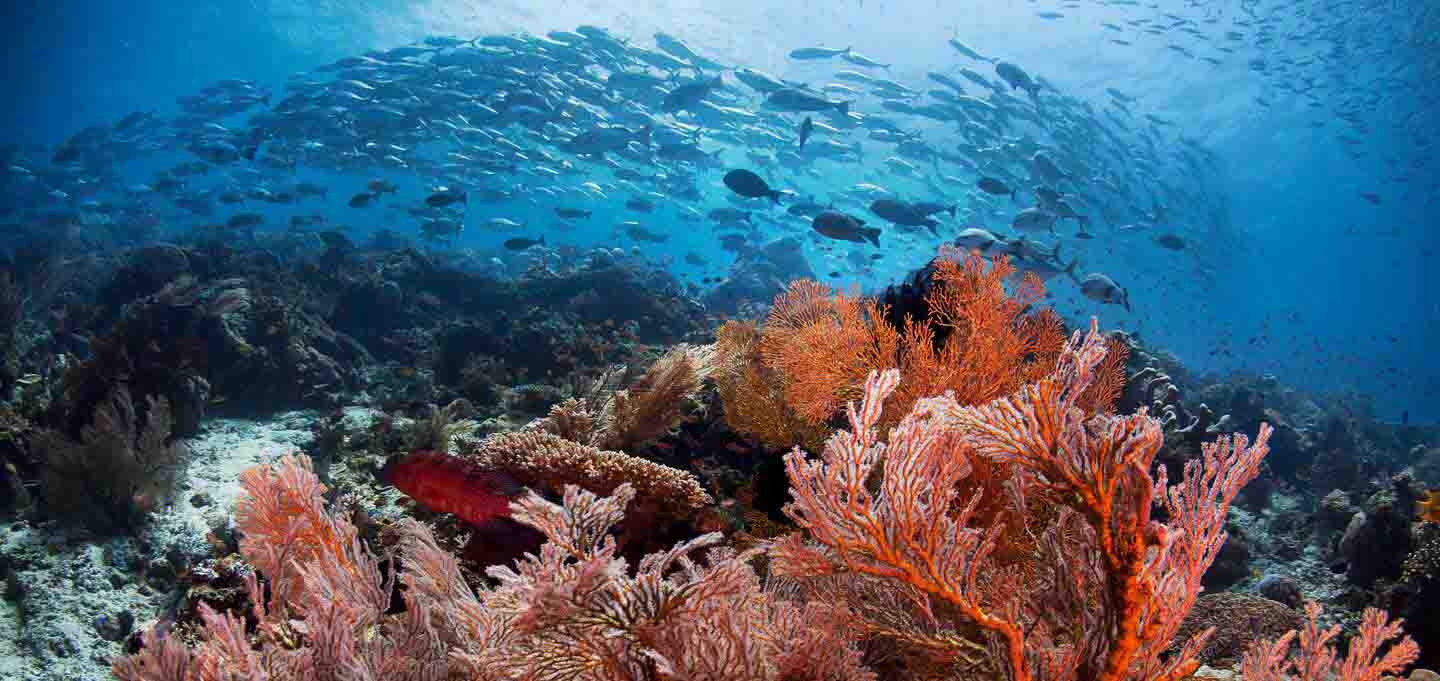Raja Ampat’s Underwater Biodiversity
Today, Raja Ampat covers 9.8 million acres of land and sea, an archipelago that comprises over 1,500 small islands that surround the four main islands of Misool, Salawati, Batanta, and Waigeo, and the smaller island of Kofiau. Thanks to its splendid location in the Coral Triangle and unique position between the Indian and Pacific Oceans, it is now home to the richest marine biodiversity on earth. One of the fact diving in Raja Ampat are the best marine live in the world. Survey from the Nature Conservancy and Conservation International say that around 75 percent of the world’s species live here.

The beauty of Raja Ampat is breathtaking to say the least and just like it’s mythical past, Raja Ampat is full of wonder both on land and underwater. Over 550 species of coral, 1,427 fish species and more than 700 different types of mollusks have made this a major epicenter for marine life. This is one of the few places on the planet where you will see a wide range of marine life in their natural habitat.
An old legend in the West Papua Province of Indonesia once told of a woman who found seven sacred eggs. It is said that four Kings hatched from those four eggs, and went on to rule over four of the largest islands in the area. This group of islands was later named Raja Ampat (Four Kings).
Interesting special species found when diving in Raja Ampat

Due to its unique location in the midst of the Coral Triangle, the areas surrounding Raja Ampat are home to massive coral colonies. High sea temperatures throughout the year also contribute to making Raja Ampat one of the most diverse on the planet in terms of biodiversity, quite possibly the richest coral reef ecosystems in the world and make this place is the best for diving activity. Some interesting species you may encounter while diving in the Raja Ampat include:
- Black mantas
When most people think of manta rays, they picture them with a dark upper side and a white or lighter lower side. This is how most rays around the world look like. However, those in the Raja Ampat area are dark on both sides. They make for a magnificent sighting.
- Pygmy seahorses
These unique seahorses are common in the area. Divers should look out for three main species including Pontohi’s pygmy seahorse, Bargibanti’s pygmy seahorse and Denise’s pygmy seahorse.
- Mantis shrimp
There are more than 8 species of shrimp in the Raja Ampat waters. Mantis shrimp are one of the species endemic to the area. They are therefore a common sighting. These shrimps are aggressive in nature, with sharp claws and hostile behavior, which have earned them the nickname ‘thumb splitters’ by local divers. They are however a wonderful sight with their bright colors. These shrimps can grow to 12 cm in length.
- Papuan garden eel
This species of eel was first discovered in the Raja Ampat waters back in 2010. They have small bodies that are not more than 60 cm long and prefer to live in groups while often hiding in the sand at the bottom of the ocean.
As you can see, divers and visitors planning a trip here will not be disappointed when diving in Raja Ampat. So, what are you waiting for? Come and stay in Raja Ampat with Papua Paradise Eco Resort! We would be more than happy to give you an awesome experience. Contact us now!
